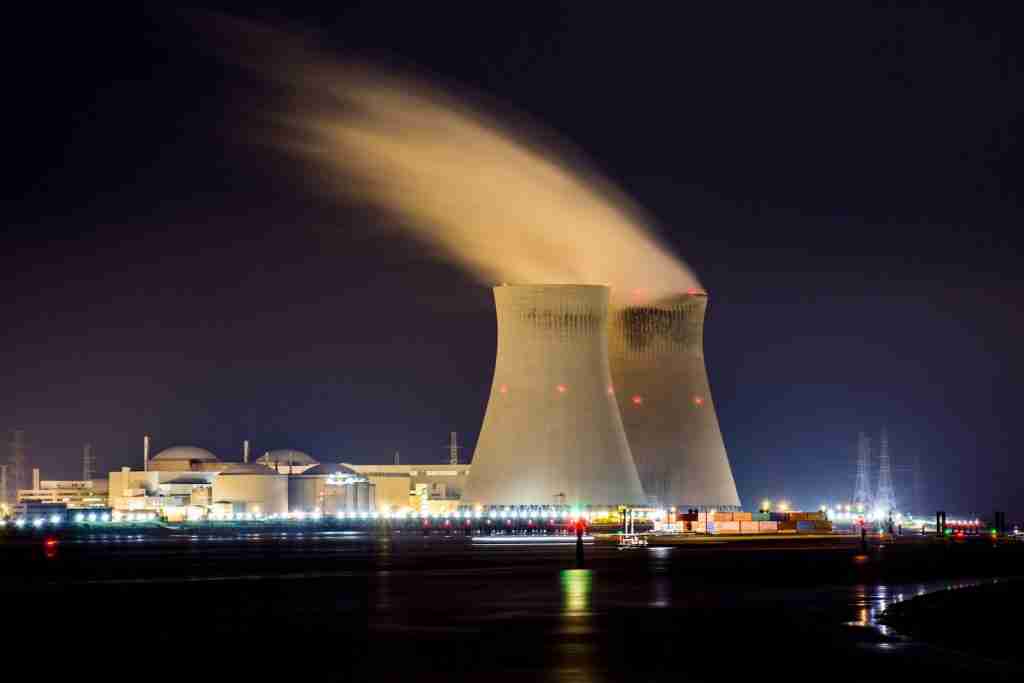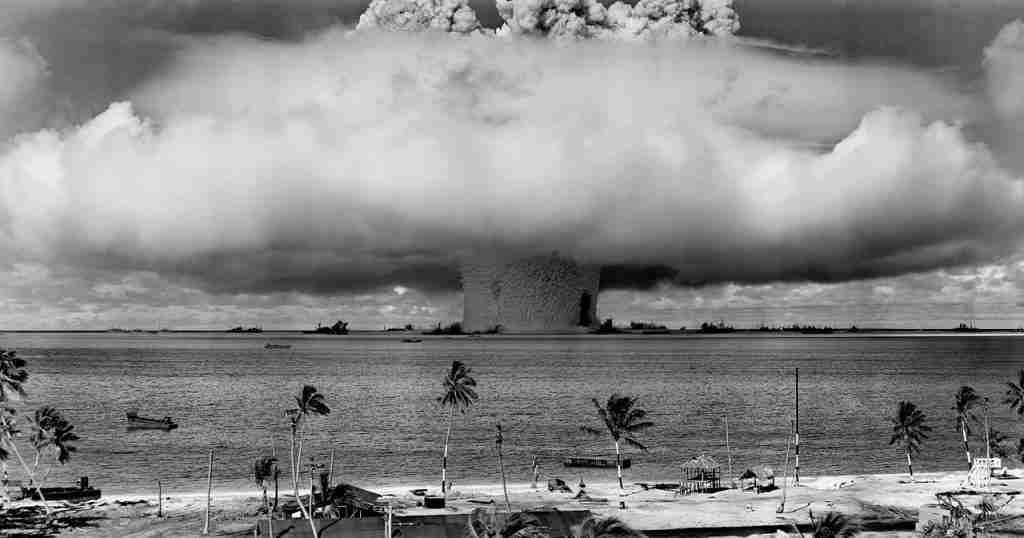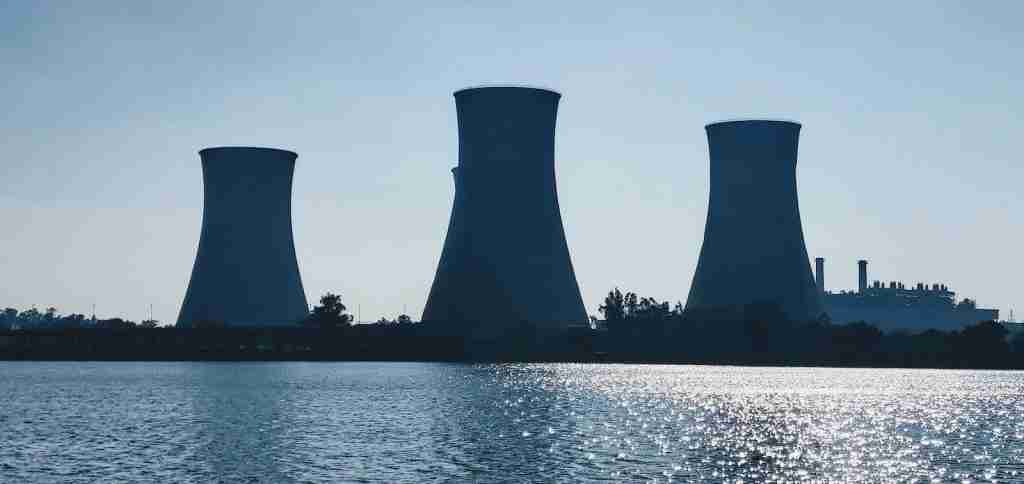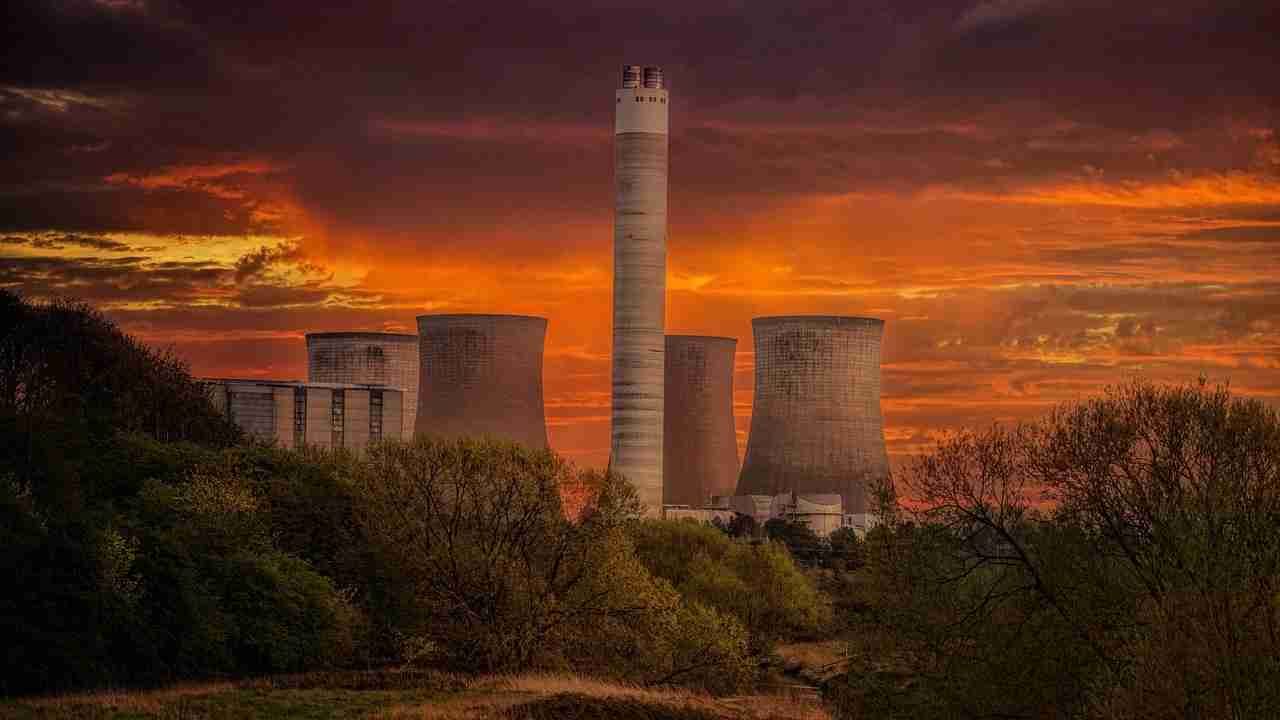22 Interesting Facts About Nuclear Energy (Atom-Powered)
1. Nuclear energy is a form of energy produced by the nuclear reaction of atoms.
Nuclear energy is a resource used to generate electricity and create other resources. It’s produced when atoms undergo fission or fusion, releasing large amounts of energy in the form of heat or radiation.
These nuclear reactions result in a reaction chain, which continually releases energy as long as it’s triggered.
2. The First Nuclear Power Plant was built in Obninsk, Russia in 1954.
An important milestone in history was achieved in 1954. The first-ever nuclear power plant was constructed that year in the city of Obninsk, Russia.
It was a groundbreaking feat, changing people’s understanding and use of energy forever. This power plant helped revolutionize not only the Russian energy sector but worldwide, as knowledge and equipment concerning nuclear power spread across nations and borders.
To this day, Obninsk is known for its monumental significance in laying the foundations for today’s world, one which runs partially on nuclear energy.
3. Nuclear power plants currently provide about 10% of the world’s electricity.
Nuclear energy is quickly becoming a large source of electricity for the world. Around 10% of the earth’s electricity currently relies on nuclear power plants, making it an essential part of our modern power grid.
This form of energy contributes to providing sustainable electricity on a global scale. It has numerous benefits such as low carbon emissions and cost efficiency.
With research advancements constantly being made, experts are excited about the potential that nuclear power has in order to bring reliable energy to more and more parts of the world.
4. Nuclear energy is the Second Largest Source of Low-Carbon power in the world, behind hydropower.
When it comes to low-carbon power sources, nuclear energy takes the second spot on the list. It trails only hydropower in popularity worldwide, making it an often sought-after option.
This type of power generation produces almost no greenhouse gases while providing reliable electricity at a potentially large scale. Having said that, careful handling is needed to ensure safety upfront as well as long-term sustainability during use and following decommissioning.
These benefits set nuclear energy apart from other sources sure to be used in the global fight against climate change.

5. Nuclear Power Plants do not produce Greenhouse Gases or air pollution.
Nuclear power plants are an effective solution for electricity generation without negative environmental impacts.
These and other renewable resources prevent the release of polluting gases and particles, such as carbon dioxide, that can exacerbate air quality concerns prevalent in many parts of the world.
Without relying on fossil fuels and other nonrenewable sources, nuclear power plants are better for reducing overall hazardous substances in the atmosphere that could challenge human health and lead to climate change if left unregulated.
6. Nuclear energy is a reliable source of electricity, with power plants operating at high capacity factors.
Nuclear energy is an efficient and reliable source of electricity, providing a consistent supply to areas in need.
With power plants operating at near maximum capacities for extended periods of time, nuclear energy is proven to offer higher efficiency and dependability than other means.
Most nuclear power plants can reach capacity factors of 90% or above, with some even running at close to 100%.
7. Nuclear power plants can operate for up to 60 years before being decommissioned.
Nuclear power plants are an efficient source of electricity, enabling continuous operation for decades. With limited maintenance and servicing, those plants can keep running for up to 60 years at maximum efficiency.
After the expiration of this time period, the structure is examined and must adhere to standards specified by regulatory institutions before being decommissioned.
In some countries, legislators mandate that these facilities undergo revamping and upgrade in order to adhere to new safety regulations before their maturity date.
8. Nuclear energy is one of the most Heavily Regulated Industries in the world.
The nuclear energy industry is one of the most heavily appeared industries globally. Governments have strict regulations in place to keep it running as safely and efficiently as possible.
Every aspect must remain compliant with an extensive range of legal frameworks and instructions aimed at minimizing risks to personnel and the surrounding environment.
Through diligent management, organizations within this sector are held accountable for their production practices and procedures—enabling them to ensure safety and security for all concerned.
This oversight extends beyond national borders and is supported by a wide variety of international bodies whose watchful eyes maintain high standards from land and sea.

9. Nuclear power plants use fuel made of Enriched Uranium or Plutonium.
Nuclear power plants provide an abundant source of non-emitting electricity. To create this energy, however, specialized materials are required.
These materials consist of enriched uranium and plutonium, chemical elements that are manipulated to enhance their reactivity, generating heat to power nuclear reactors.
Such chemical products enable electricity to be generated without requiring still scarce fossil fuels like coal, resulting in a lowered local carbon footprint as well as decreased global temperatures.
10. Nuclear accidents, such as Chernobyl and Fukushima, are rare but can have severe consequences.
Nuclear accidents do not happen frequently, but their effects can be damaging when they do occur. Chornobyl and Fukushima serve as stark reminders of the potential destruction of highly hazardous events.
Even though these incidents are unique, countries across the globe have learned from them and enacted rigorous procurement policies to limit the chance of another disaster from occurring again.
Sadly, even small safety violations have proven deadly since such processes involve extremely poisonous materials with nowhere for contamination to go but out into the environment and collapse inevitable fallout patterns.
11. Nuclear waste must be stored safely for thousands of years.
Storing nuclear waste is a significant challenge, as it must remain safely contained for thousands of years. The endurance of this waste must last until it has safely decayed and no longer poses a threat to the environment.
With this in mind, careful planning and sophisticated infrastructure must be maintained so as to contain hazardous materials over such a long period of time.
Significant international partnerships are necessary to properly dispose of such waste, as well as facilitate research with the ultimate goal of reducing environmental impact.
Through working together, resources can be managed sustainably with forward-thinking technological solutions for safely containing nuclear waste over thousands of years.
12. Nuclear weapons and Nuclear Power are different uses of nuclear technology.
Storing nuclear waste is a significant challenge, as it must remain safely contained for thousands of years. The endurance of this waste must last until it has safely decayed and no longer poses a threat to the environment.
With this in mind, careful planning and sophisticated infrastructure must be maintained so as to contain hazardous materials over such a long period of time.
Significant international partnerships are necessary to properly dispose of such waste, as well as facilitate research with the ultimate goal of reducing environmental impact.
13. Nuclear energy can be used for peaceful purposes, such as medical isotopes and desalination.
Nuclear energy, though often associated with dangerous consequences and potential hazards, does have a few peaceful applications. It can be used to produce medical isotopes to help treat diseases and help save lives.
Additionally, nuclear energy plays an important role in assisting with desalination efforts. Desalination is the process of removing salts from water in order to convert it into a freshwater supply for human consumption or other uses such as agricultural projects.
Through this process, countries and cities with limited access to potable water sources have found solutions thanks partly to the use of nuclear energy.
14. Nuclear fusion, the process that powers the sun, is being researched as a potential future energy source.
For centuries our sun has shined with a vibrant, eternally burning flame that scholars believe to be powered by an energy source of nuclear fusion.
As the demand for renewable and sustainable green energy sources becomes more and more of a reality scientists are now exploring this same process found in our star.
Nuclear fusion is being looked into as a potential future energy source, one that may eventually provide reliable power the whole world can tap into for their electricity needs and life-sustaining resources.
Utilizing something found ubiquitously throughout nature gives possibilities to revolutionize humanity, unlocking innovation and fueling society with friendship for all.
15. Nuclear energy is a low-carbon energy source and does not emit pollutants like sulfur dioxide, particulate matter, and nitrogen oxides.
Nuclear energy is a clean energy source, capable of generating low-carbon electricity with minimal emissions. This means that pollutants such as sulfur dioxide, particulate matter, and nitrogen oxides are not emitted during the generation of electricity.
Not only does this make nuclear power an environmental way of creating electricity – it also reduces the risk of air pollution around generating facilities.
Nuclear energy sets an example the other forms of power generation when it comes to protecting the environment and reducing hazardous byproducts associated with the burning and extraction of fossil fuels or other conventional sources of energy.
16. Nuclear energy is a reliable energy source because it generates electricity 24/7, unlike solar and wind energy which rely on weather conditions.
Nuclear energy is an incredibly reliable source of electricity. Unlike solar or wind energy that relies on cyclical weather patterns, nuclear energy can generate electricity on demand — at any time, day or night.
Utilizing this technology allows unprecedented control over the generation and availability of power. Nuclear also offers a steady supply of power compared to renewable sources that intermittently produce varying levels of electric output as the environment changes.
This ensures a much more consistent resource for the constant operation of industrial processes and saving lives through essential services like healthcare.

17. Nuclear energy can be a more cost-effective option than renewable energy sources like solar and wind power.
Nuclear energy is often seen as a more cost-effective option to generate electricity than renewable sources like solar and wind power.
This is mainly attributed to lower capital costs associated with nuclear plants, in which reactors may end up paying off their construction debt within a short time span.
Compared to renewables, nuclear plants also have higher generations of reliable power at consistently low costs even when environmental factors like sunshine or wind speed fluctuate.
In other words, nuclear energy offers consistent output that can outperform renewable energy sources.
18. Nuclear energy is a dense energy source, meaning a small amount of fuel can produce a large amount of electricity.
Nuclear energy is packed full of potential, way more than its size would suggest. One of its awesome properties is its ability to produce a vast amount of electricity with just a tiny amount of fuel.
Its density means that it has the capacity to generate large amounts of reliable power despite being self-contained in a small area.
This allows countries to access big amounts of electricity that can be put to use for public service and various industries.
19. Nuclear power plants use a process called nuclear fission to generate electricity.
Nuclear power plants employ a method called nuclear fission to create electricity. This process involves splitting and then combining atomic particles, which ultimately generate energy.
This energy is harnessed and transformed into electricity, which may be used for various everyday products and utilities homes rely on such as lighting, heating, and other machinery such as refrigerators to name a few.
The benefits of using nuclear fission for electricity are that it is an inexpensive and efficient source of power that does not require the carrying or burning of physical fuels like wood, coal, or oil.
20. The process of nuclear fission creates a large amount of heat, which is used to create steam to turn turbines and generate electricity.
Nuclear fission as a process consists of amazing power. With this energy, extremely high levels of heat will be unleashed.
The thermal power released then can be ultimately used to turn turbines, at the end generating electricity for consumer use. This produced steam is thereafter injected directly into alternate sources such as electricity.
Nuclear fission truly reveals one of the fascinating potential gems that can occur when science and nature combine – moreover, this phenomenon envelopes qualities simultaneously involving interaction and interdependence.

21. Nuclear power can be used to generate electricity, as well as to power ships and submarines.
Nuclear power is an effective way to generate large amounts of electricity. It is also frequently used to power ships and submarines that require higher levels of performance.
Inside a nuclear reactor, the atom splits into two lighter atoms due to fission, which results in energy and heat being released. This released energy can be harnessed and outputted as electricity or propulsive forces for vessels.
Furthermore, aside from powering navy ships and other maritime vessels, nuclear energy has been used for space exploration for generations to send shuttles into deep space since their mission objectives often feature long durations at one point rather than hoping from planet to planet for fuel sources.
22. Research is ongoing in developing safer and more efficient nuclear power technology, such as Small Modular Reactors (SMRs)
Research into nuclear power technology is never ending, as scientists make strides to construct safer and more effective energy sources.
Small Modular Reactors are one avenue that scientists are relentlessly pursuing in regard to establishing cleaner methods of obtaining energy globally.
SMRs advance the insulation surrounding the innermost components of the reactor, allowing for heated combustion to occur with improved precision.
This separation between containment systems enables today’s researchers to provide well-controlled environments that reduce the potential danger of dramatic side effects sometimes associated with traditional fuel sources.







